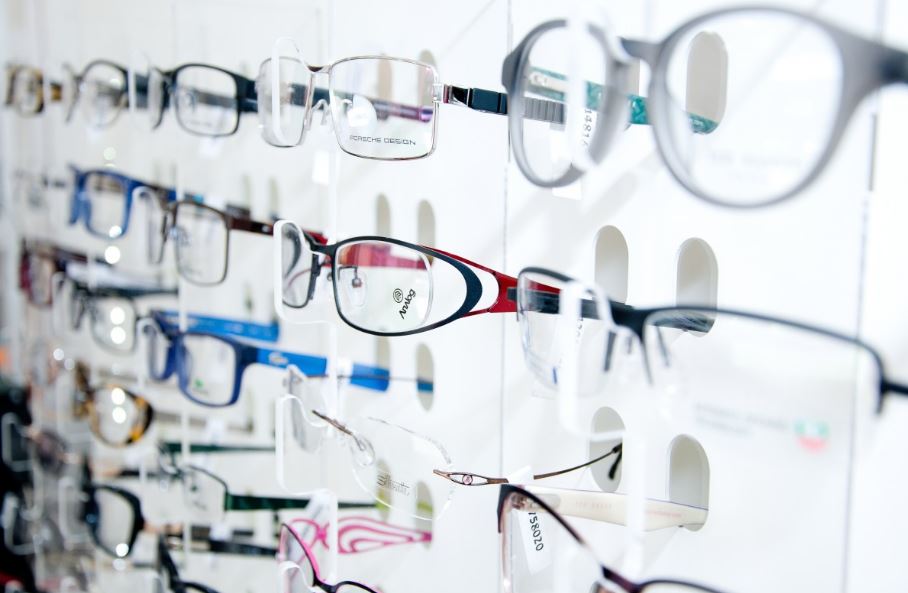The glasses industry can be overwhelming with diverse types on the market, but once they are broken down into distinct categories, it is much easier to understand. The two main categories are prescription and non-prescription, which then leads into the selection of frames and lenses that are most suitable, based on the need for the glasses.
Prescription Glasses
Prescription glasses require a professional eye examination to identify weaknesses:
The types of prescription glasses include:
- Single vision – effective at correcting one optical problem
- Bifocal – effective at correcting two optical problems at once
- Trifocal – effective at correcting three optical problems at once
- Progressive – like bifocal and trifocal lenses, but with a smoother transition between segments
Prescription glasses are used to correct the following vision problems:
- Nearsightedness (myopia) – objects far away appear blurry when the lens becomes too curved to refract light correctly
- Farsightedness (hyperopia) – objects nearby appear blurry when the lens becomes too flat to refract light correctly
- Astigmatism – objects or nearby can appear blurry due to imperfection in the curvature of the cornea, or mismatched curvature of the lens
Non-Prescription Glasses
Non-prescription glasses do not always require an eye examination to identify weaknesses and can be bought over the counter:
- Reading – glasses intended to prevent eyestrain when focusing on writing
- Blue Light – lenses specifically designed to filter blue light to reduce exposure when using digital screens (you can browse these on Just-glasses.co.uk)
- Safety – protective glasses used by professionals to protect their eyes from harmful environments
- Sunglasses – with polarized and UV blocking lenses, to protect eyes from the sun
Lenses
There a variety of materials used in creating lenses with varying levels of quality and features, including:
- Glass – high quality but less durable
- Plastic – produces comparable results to glass but cost less and are more durable
- High-Index Plastic – one of the thinnest and lightest lens available
- Polycarbonate – commonly used in safety goggles and children’s eyewear due to durability
- Trivex – similarly to polycarbonate, a durable option, suitable for protecting the eyes from harm
- Aspheric – high quality, flat and thin, beneficial for stronger prescriptions
- High Definition – more expensive than most other options but provides outstanding quality
- Photochromatic – also known as ‘transition’ lenses, they act as sunglasses by dimming when exposed to UV rays
- Scratch-Resistant Coating – finished with a protective coating to reduce damage, increasing durability
- Anti-Reflective Coating – also known as ‘anti-glare’ lenses, they make driving, reading, and using screens easier by eliminating reflections
- Anti-Fog Coating – reduces the amount of fogging when switching from colder to warmer climates
- UV Blocking – finished with a UV blocking dye, they reduce health risks associated with exposure to UV rays
Frames
The most common materials used in making frames are:
- Plastic – using zylonite, nylon blends and castor seed oil, providing more color variation with lower cost
- Metal – using monel, titanium, beryllium, stainless steel, flexon and aluminum, offers more durability but fewer colors
- Wood – using bamboo provides an environmentally friendly and sustainable alternative but it’s high maintenance and not ideal in humid climates
All frames fit within the three categories:
- Full Frame – fully outline the lens
- Semi-Rimless – partially outline the lens
- Rimless – frame-free lens
Within these categories of frames, comes a range of styles:
- Rectangle – standard rectangular shaped glasses
- Browline – rimless at the bottom, outlined at the top
- Cat-Eye – accentuated with a feline form
- Round – circular shape, leaning towards a retro feel
There are many types of glasses, lenses, and frames to choose from, depending on your personal needs and preferences. For prescription glasses, it is necessary to register with an eye doctor for an examination. This will help to identify any optical problems that require treatment with corrective lenses. Glasses for reading, blue light, or sun blocking, can be bought over the counter or online.

